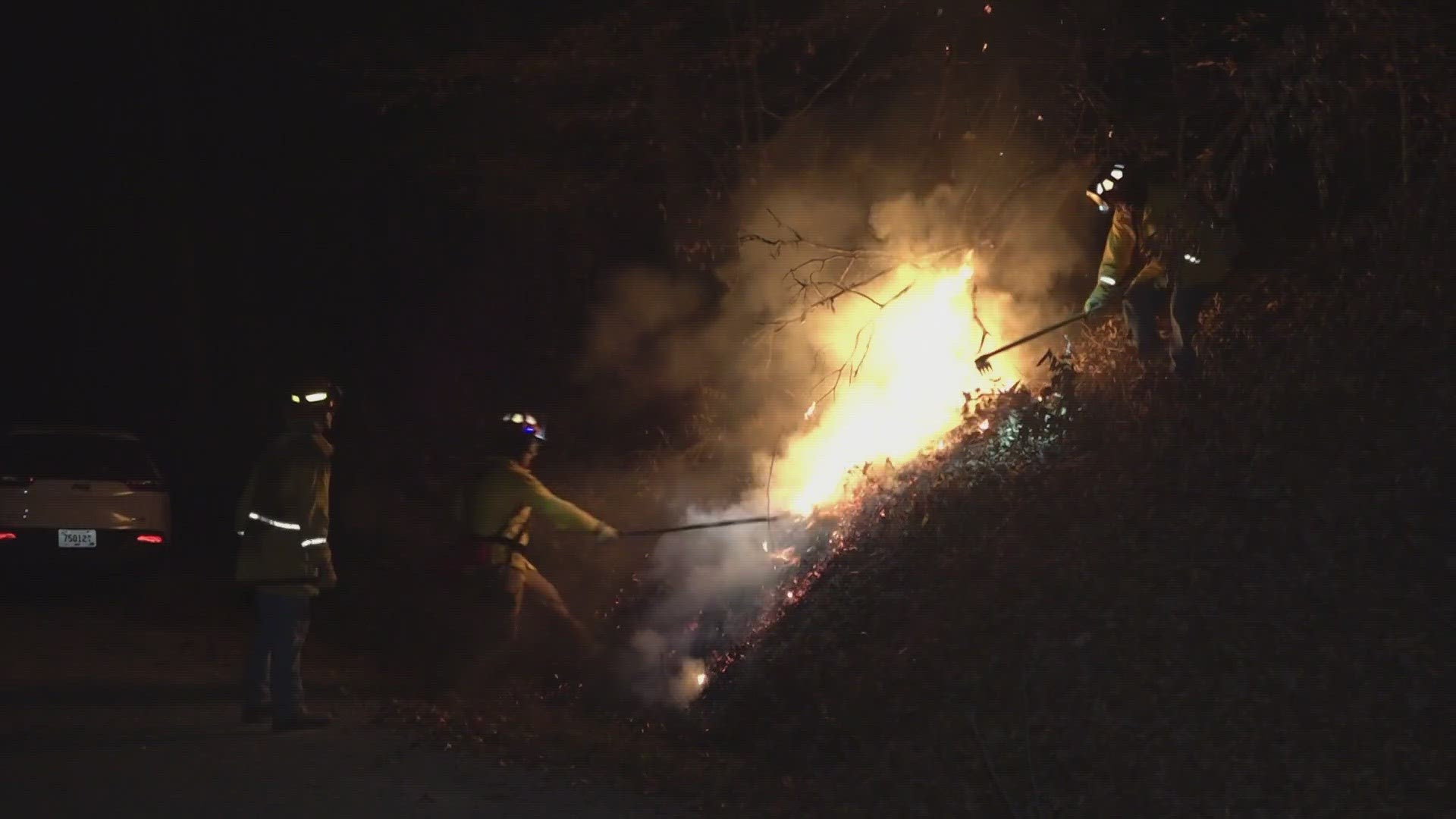KNOXVILLE, Tenn. — It's fall wildfire season in Tennessee and fire departments across the state and the Tennessee Division of Forestry are responding to the call.
"This time of year, we are staying aware of our weather conditions and the fuel moisture," said Brook Smith, the area forester for Knox, Anderson, and Sevier counties. "We're staying in communication with our local partners from our volunteer fire departments, and our structure departments as well as our federal partners."
The Dispatch Office sends forestry crews to assist fire departments fighting wildfires. Nathan Waters, the assistant district forester of East Tennessee, said the Division of Forestry usually provides extra equipment to help control the fire.
He says there are about 30 bulldozers in his district, to be used across 24 counties.
"If we've got ten of our dozers tied up there and a lot of our units, then it makes us sort of vulnerable," says Waters. "If we have other areas that aren't, that might have a fire, the fortunate thing we had about this past event was most of the fires were occurring out there in one area. And so we were sort of lucky right there."
He said the Division of Forestry isn't responding to every single wildfire but they try to provide departments with the proper training.
"They know when to call us you know if it's not something that you can hit with the hose and get out," said Waters.
He adds during this time of year, there are still green leaves falling from trees, which could restart a fire after it's already been put out. So it's important to monitor the area even after a fire has been 100% contained.
And Smith agrees.
"The predominant fuel loading that moves fire across the state of Tennessee is our leaf litter," said Smith. "So that's why this time of year, we're very concerned about the deciduous trees that will drop their leaves in the fall of the year. And that's a fresh crop of fuel loading that hits the ground. Now, sometimes it can be wet. And like right now we're in a drought situation. So we're much more concerned with that fuel loading."
In addition to fire suppression, the Division of Forestry also helps with the mitigation of fuel loading. It can include clearing vegetation, brush, leaf litter, or anything else that will burn.
"We have a mitigation program, and that program is to address the fuel loading around our communities within the wildland-urban interface," said Smith. "And if we can mitigate the fuel loading the fire activity directly around those communities will be lower activity, lower intensity, which makes it safer for the communities if no responders are able to get there, the community will be resilient."
According to Waters, most of the fires east of the Mississippi are caused by people and to the west of the river, most are caused naturally.

